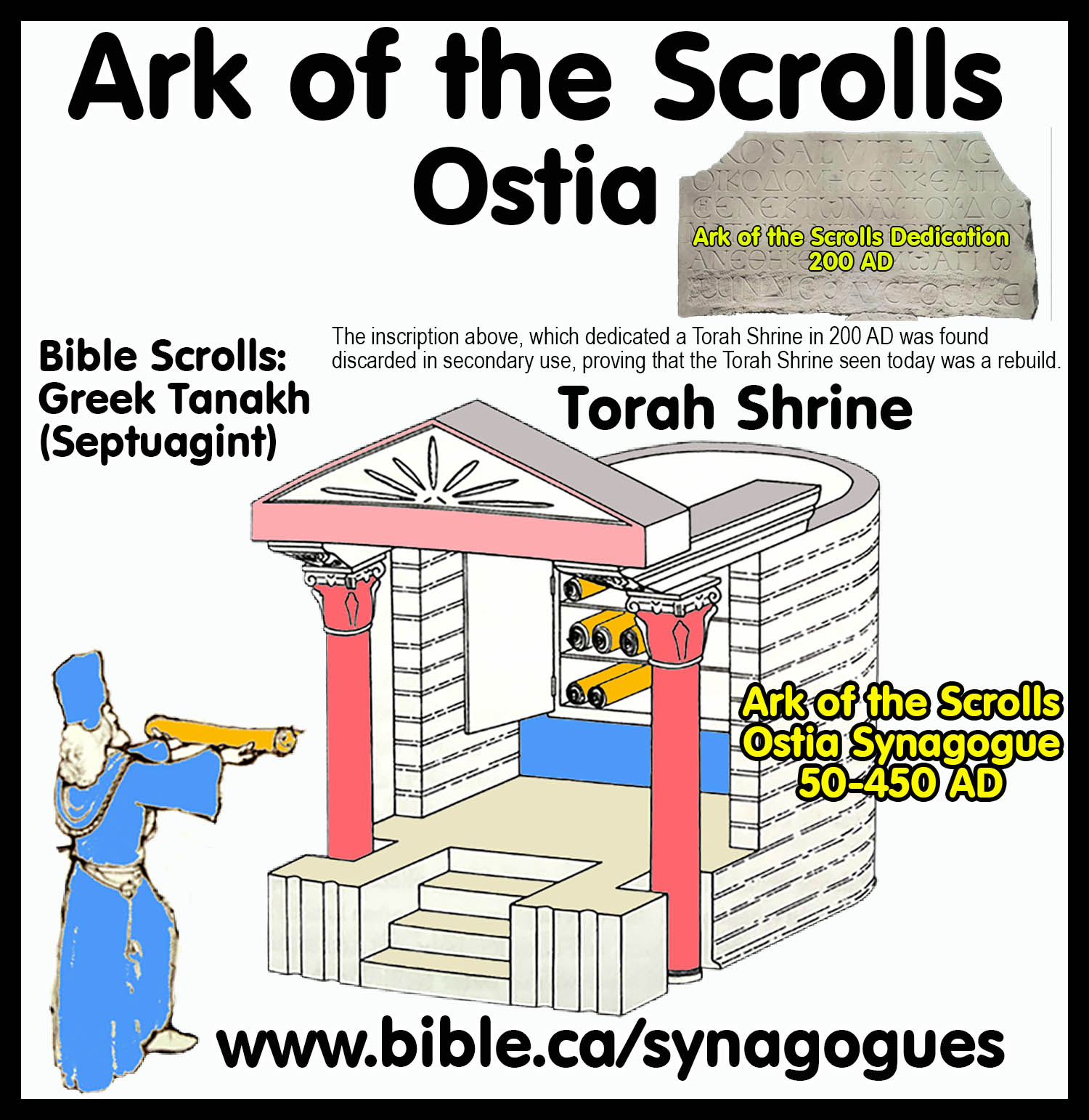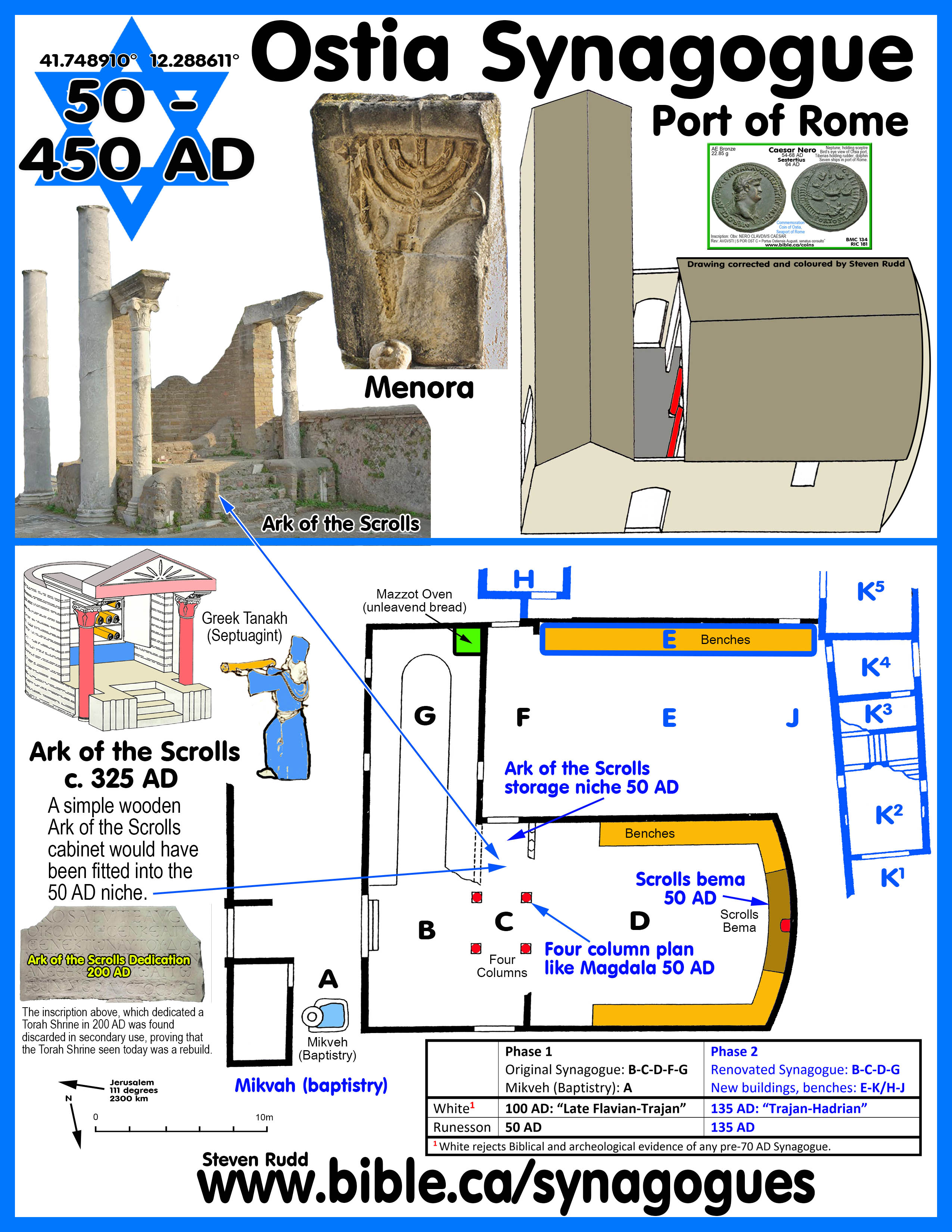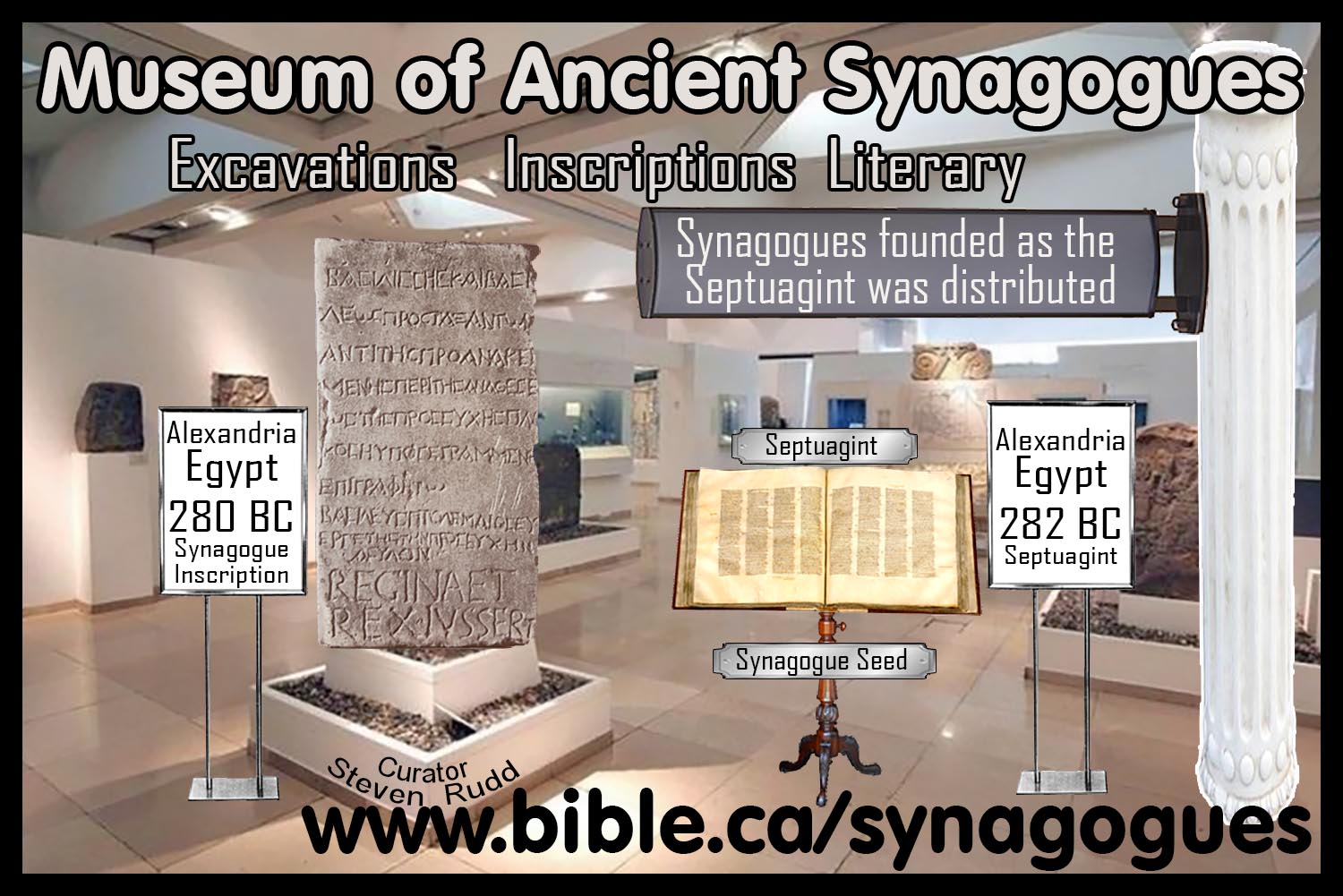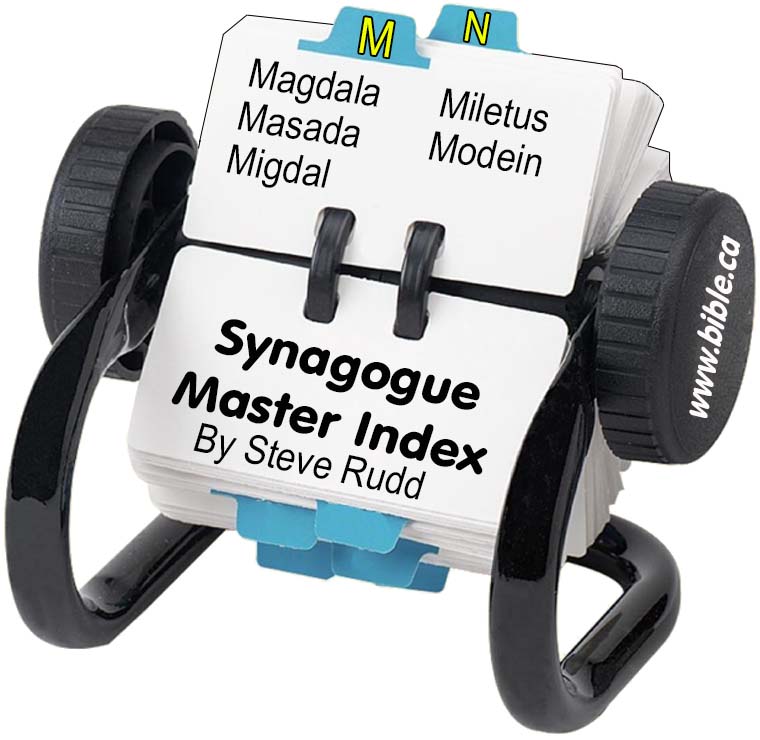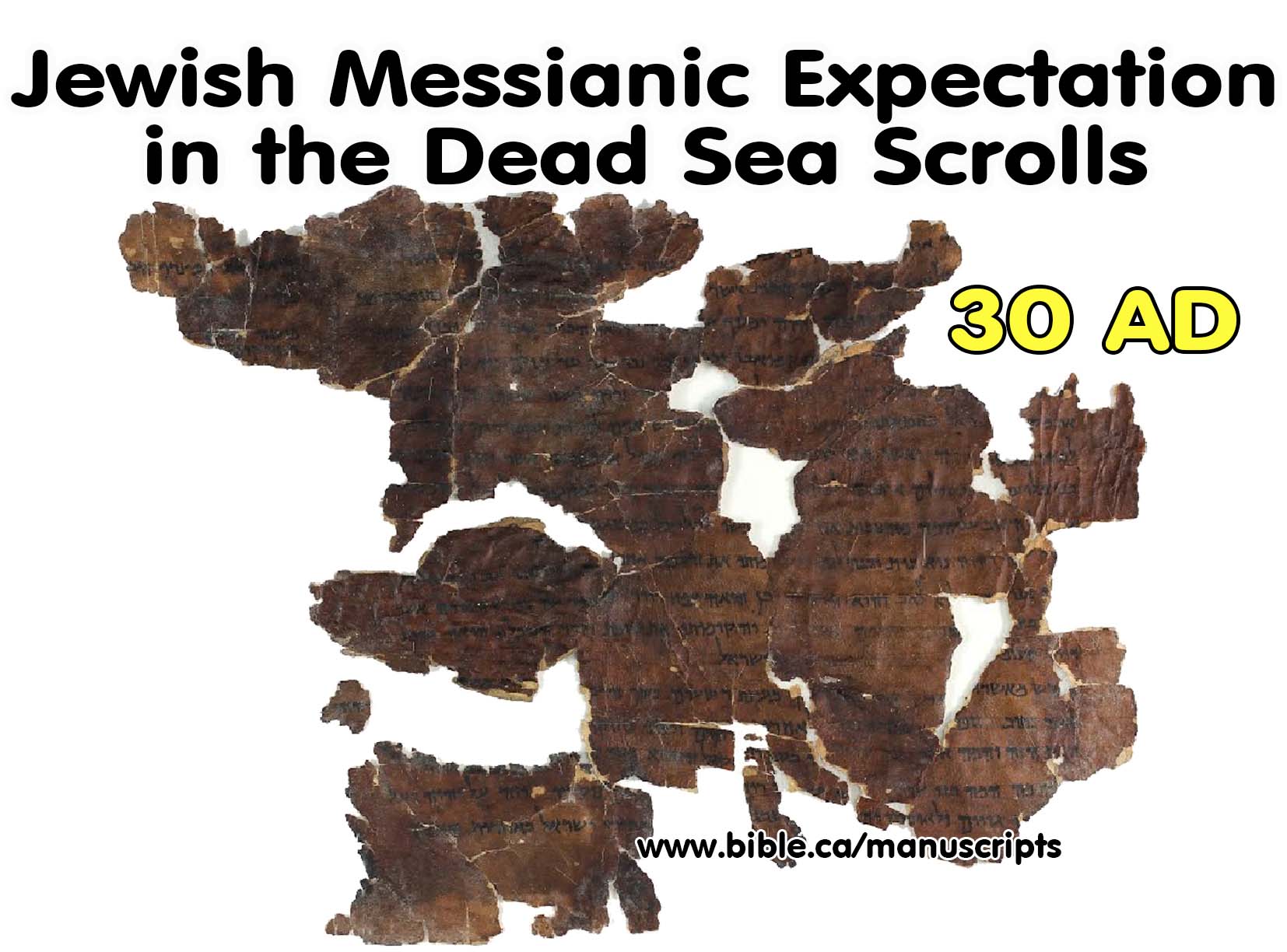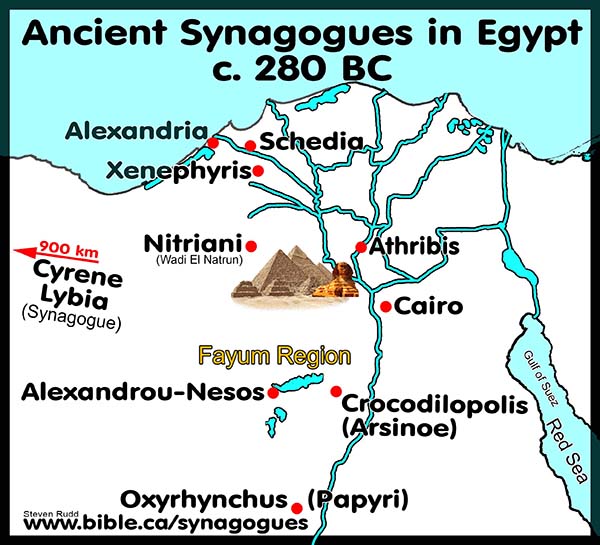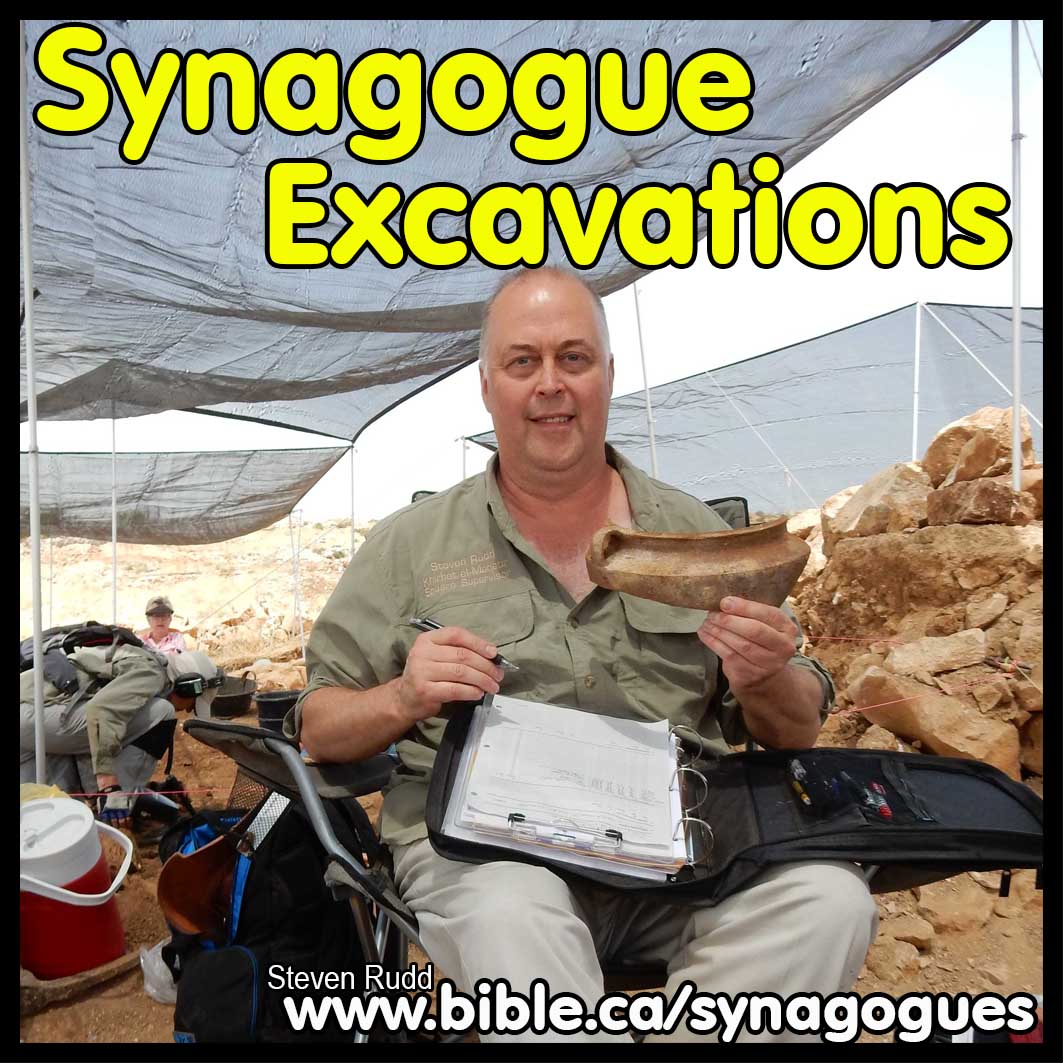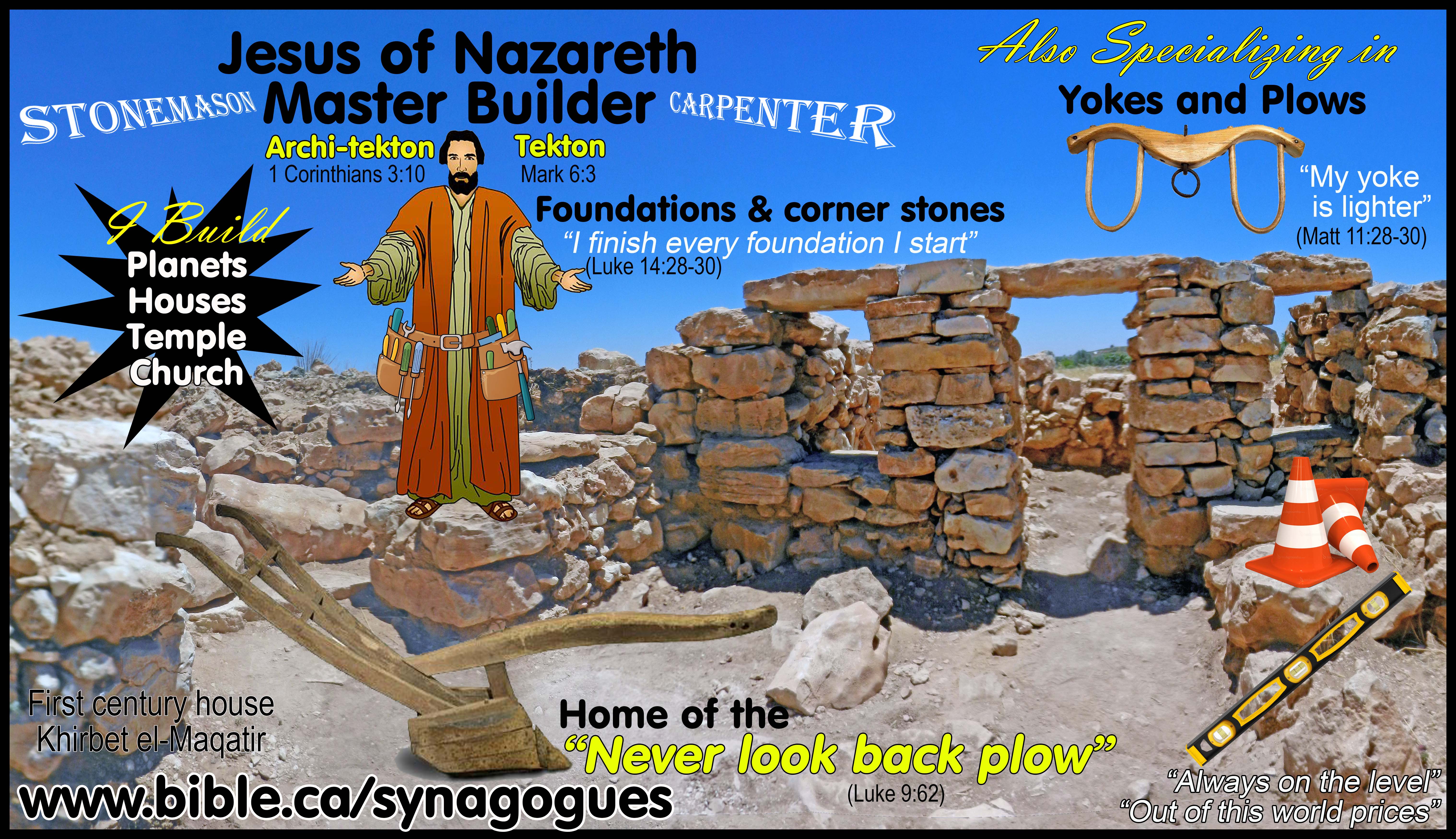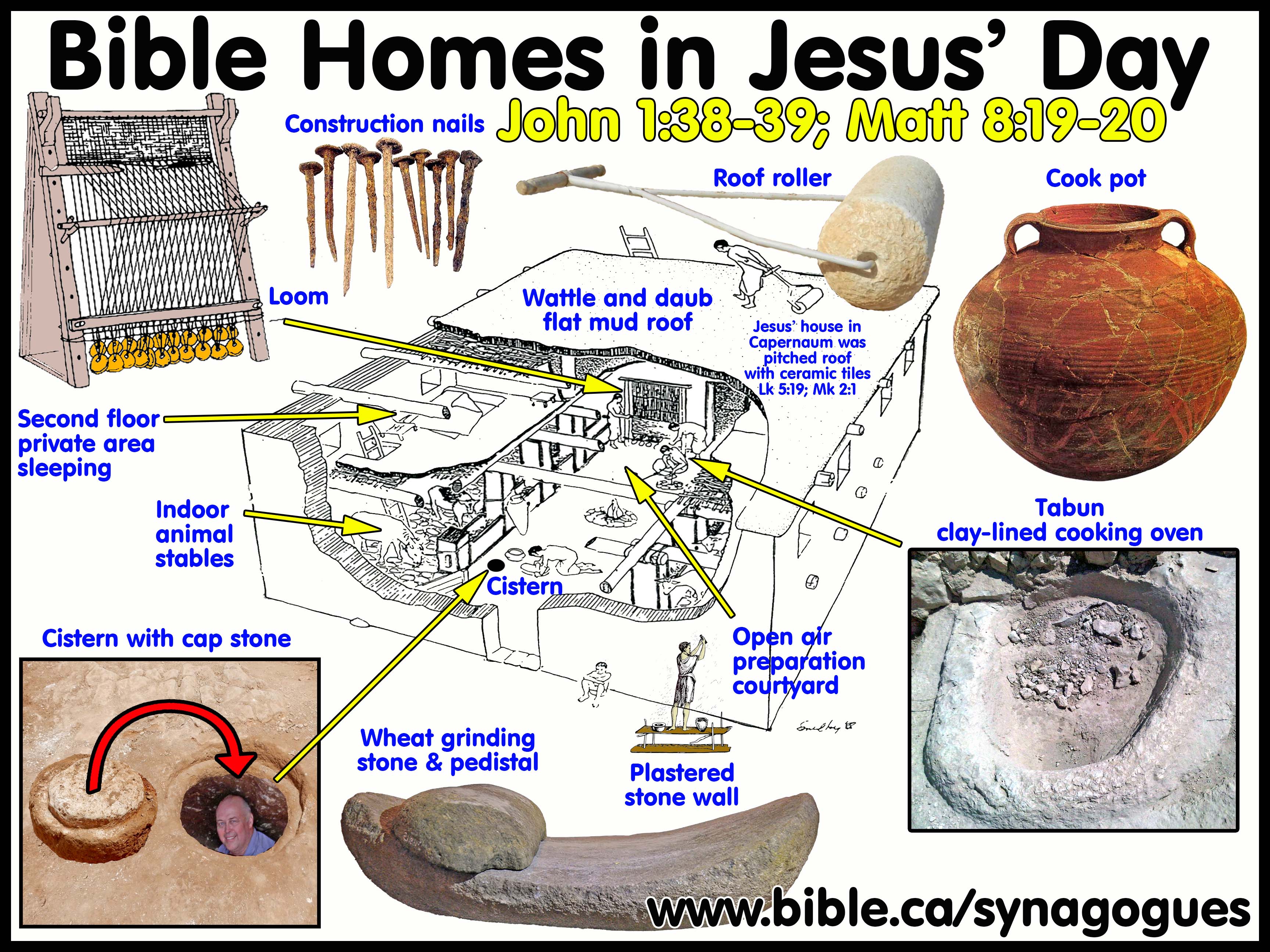First Century Synagogue Top Plans: Ostia 50 AD
Archeological Excavations of Oldest Synagogues in the world
|
Ostia, Seaport of Rome, Italy 50 BC |
Click on photos for high resolution
1. Location:
a. Ostia is the main seaport of Rome built by Augustus. The fact imperial decrees referenced the Synagogue at Ostia in 49 BC, shows that the port was functioning before Augustus did his makeover after 31 BC.
b.
The “Sestertius” coin of Nero in 64 AD commemorates a renovation of the
Port under Nero.
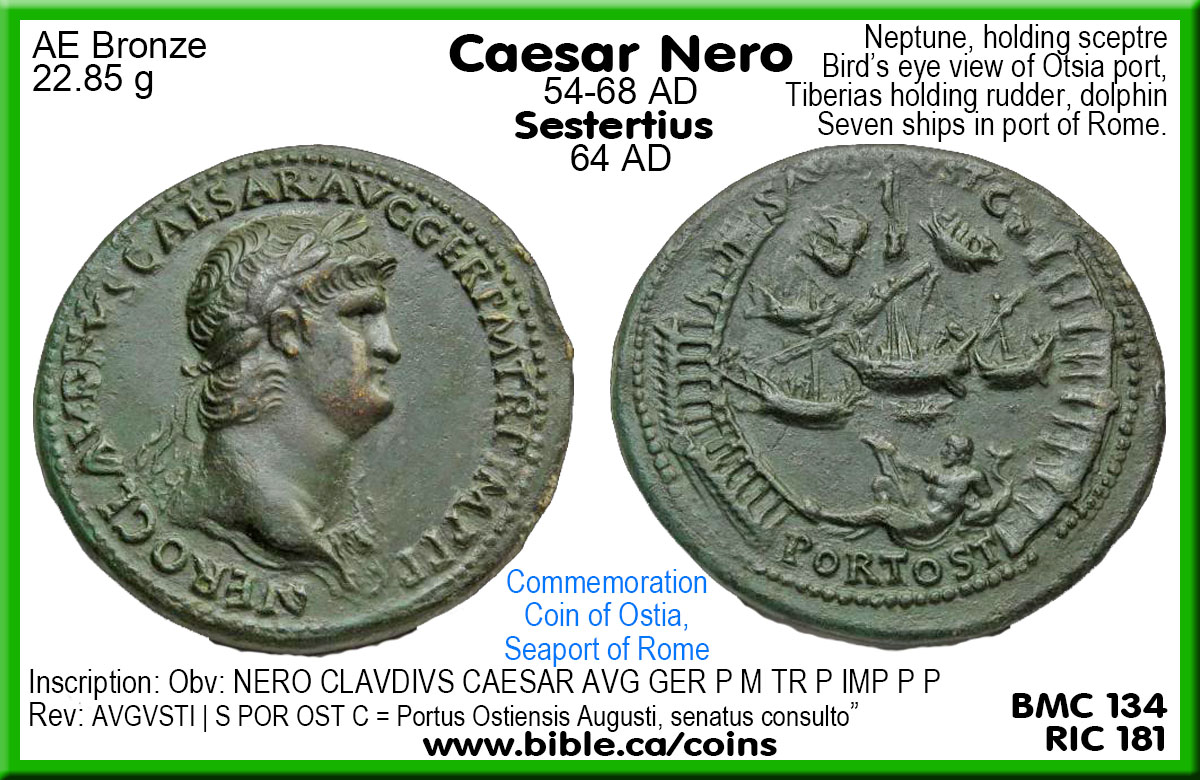
c. Ostia is 32 km south west of Rome on the main highway.
d. It is likely that Apostle Paul preached in the synagogue of Ostia after his release from being in prison for two years.
e. GPS: 41.748910° 12.288611°
2. The Synagogue at Ostia used the Septuagint, as did every other synagogue in the world.
A. Earliest Synagogue Occupation Date (SOD) = 50 AD
1. Excavation date: first century
2. Inscriptional date: Ostia synagogue inscription of 200 AD
3. Literary date: None
4. SOD computation system details: Excavation date + Inscriptional date + Literary date = SOD.
B. Synagogue Compass Orientation:
1. Orientation East or towards Jerusalem: No.
2. Compass headings:
a. Compass heading towards Jerusalem: 111 Degrees.
b. Distance to Jerusalem: 2300 Kilometers.
3. When an archeologist begins excavating a newly discovered synagogue, the first thing he does to determine if it is a first temple, pre-70 AD installation is determine the orientation.
a. If the synagogue points east it is not pre-70 AD but built after 200 AD.
b. If the synagogue is oriented towards Jerusalem it is not pre-70 AD but built after 200 AD.
4. See Orientation: Early Synagogues did not Point to Jerusalem
C. Occupation history:
|
|
Phase 1 Original Synagogue: B-C-D-F-G Mikveh (Baptistry): A |
Phase 2 Renovated Synagogue: B-C-D-G New buildings, benches: E-K/H-J |
|
White1 |
135 AD: “Trajan-Hadrian” |
|
|
Runesson |
50 AD |
135 AD |
|
1 White rejects Biblical and archeological evidence of any pre-70 AD Synagogue. |
||
D. Excavation details:
a. See also: Greek Septuagint: The Standard Tanakh of every ancient synagogue
b. See also: the Ostia synagogue inscription of 200 AD
c. The Septuagint was the “King James Version” of the ancient Jewish synagogue as far back as 282 BC.
d. The Septuagint was the “standard issue Tanakh”, as an “accepted and trusted translation” in every synagogue much like the King James Version is in the Church today.
e. Hebrew was extinct in Judea at the time of Christ, except for the Jerusalem elites (Sadducees) who ran the temple.
f. The entire diaspora Jewish population from 300 BC spoke Greek and were unable to read Hebrew.
g. As the Septuagint was distributed in 280 BC throughout the world, it spawned synagogues according to its disaposra circulation.
h. See also: Origin: Synagogues originated at Alexandria Egypt in 280 BC spawned by the Septuagint
2. Four freestanding columns:
a. See also: Freestanding Columns: Antitype of Christians
b. Three open air, roofless synagogues utilized four freestanding columns. Magdala 50 BC, Herodium 66 AD, Ostia 50 AD. There are two roofed synagogues (Magdala 50 BC and Herodium 66 AD) that features four HEART-SHAPED columns in each of the four corners. While the total number of columns was more than four, the special heart shape for the pillars in the corners had symbolic value and were required to conform with “what a synagogue was supposed to look like architecturally.”
c. The ostia synagogue not only featured four columns, like the pattern of Judean synagogues, but they were FREESTANDING.
a.
“While the assembly hall at Ostia had a roof, the four freestanding
columns were located in an open roofless atrium area: “Besides their
essentially functional role, some synagogue columns might have had a purely ornamental purpose. The four monumental columns in the entranceway to the Ostia sanctuary were
clearly intended as a kind of propylaeum [entrance of architectural
importance to the Synagogue].” (The Synagogue in Late Antiquity, Lee Levine,
p340, 1987 AD)
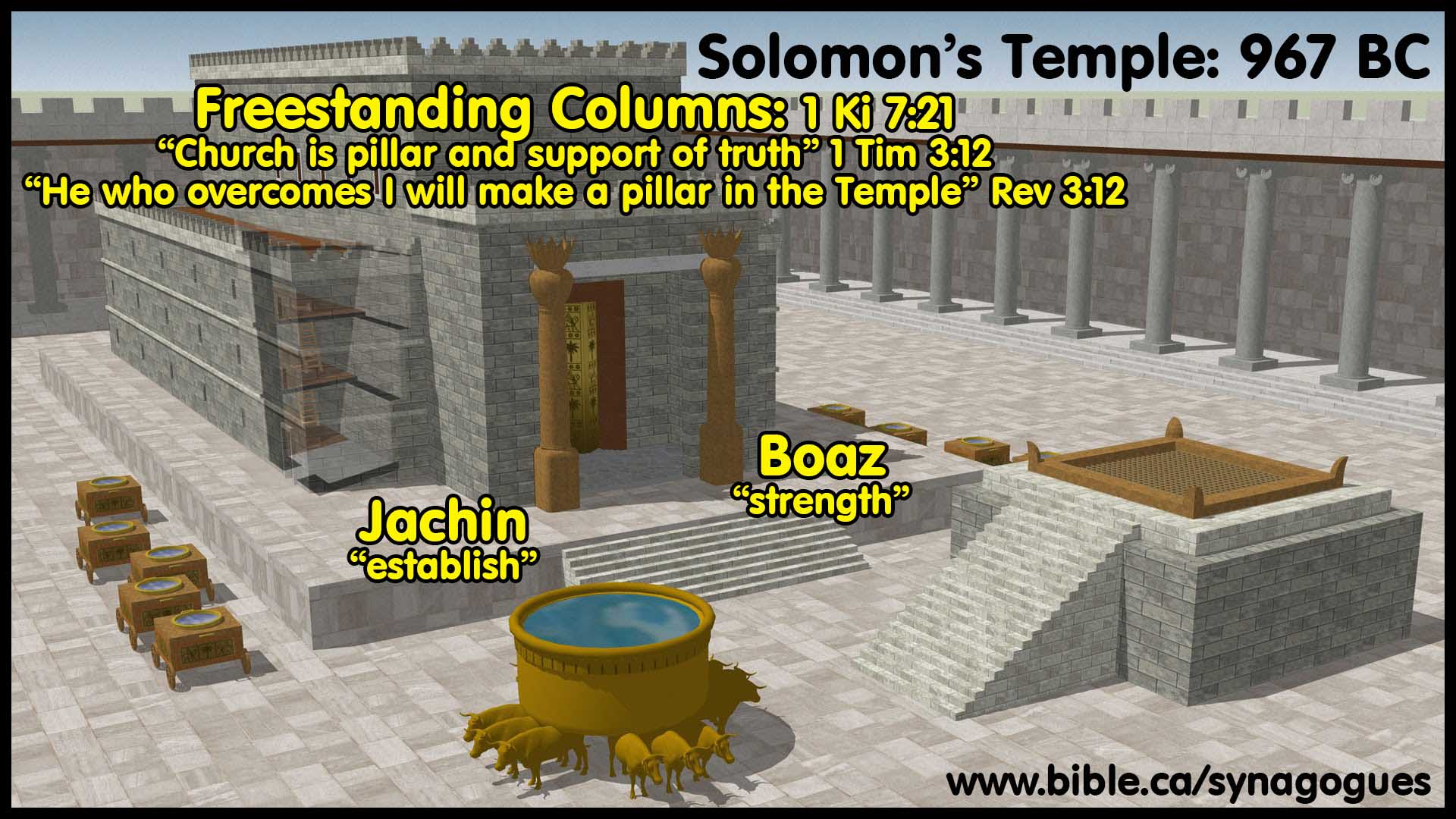
3. The Synagogue Mozzot oven for Passover bread:
a. See also: Food: Sacred Passover Meals, No Common Meals In Synagogues
b. You can see the Mozzot oven in the synagogue kitchen on the top plan.
c. This oven was not used for common meals, but like the Table of Shewbread, was used for making sacred food for the three annual feast days.
4. Ark of the Scrolls: Torah Shrine for the Septuagint
a. See also: Niches & Ark of The Scrolls: Prototype of Church Apse
b. The Ark of the Scrolls or Torah Shrine was considered as holy as the Tanakh itself.
c. There was a gradual evolution in design: Wooden cabinets and carts with wheels. Some had wooden doors while others had curtains. Simple stone structures to elaborate stone structures.
d. The inscription, which dedicated a Torah Shrine in 200 AD was found discarded in secondary use, proving that the Torah Shrine seen today was a rebuild.
e.
The Torah Shrine that can be seen at Ostia today was updated from a
previous structure: This inscription shows how a man spent his own money to
build the Torah Shrine, which is likely the predecessor to the one seen today.
The fact the original inscription was DISCARDED AND REUSED, proves that when
the Ark of the Scrolls he built was torn down, that they also THREW OUT the
inscription.
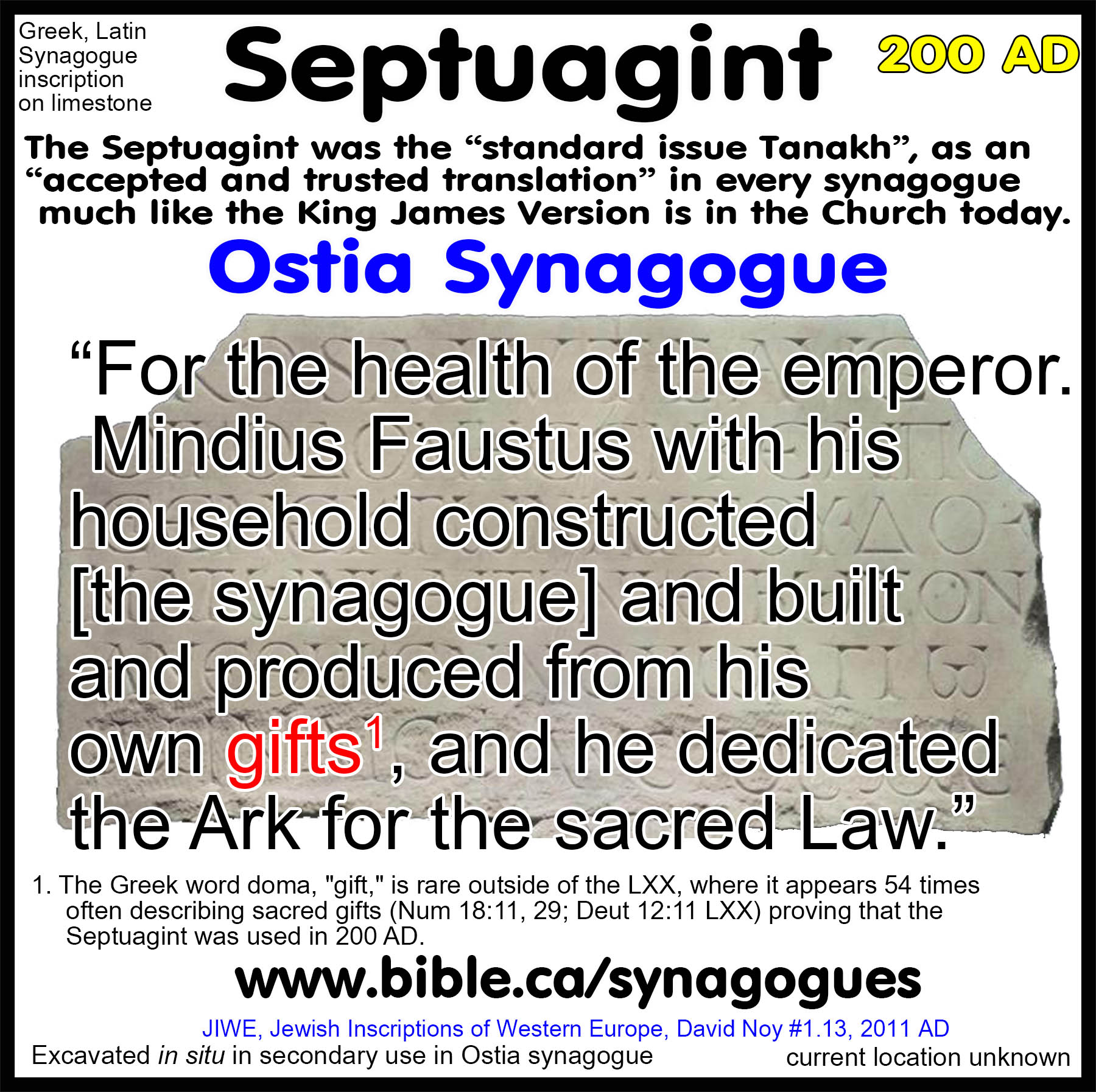
f.
The earlier niche that can be seen on the top plan would have had a
simple wooden Ark of the Scrolls cabinet would have been fitted into the 50 AD
structure.
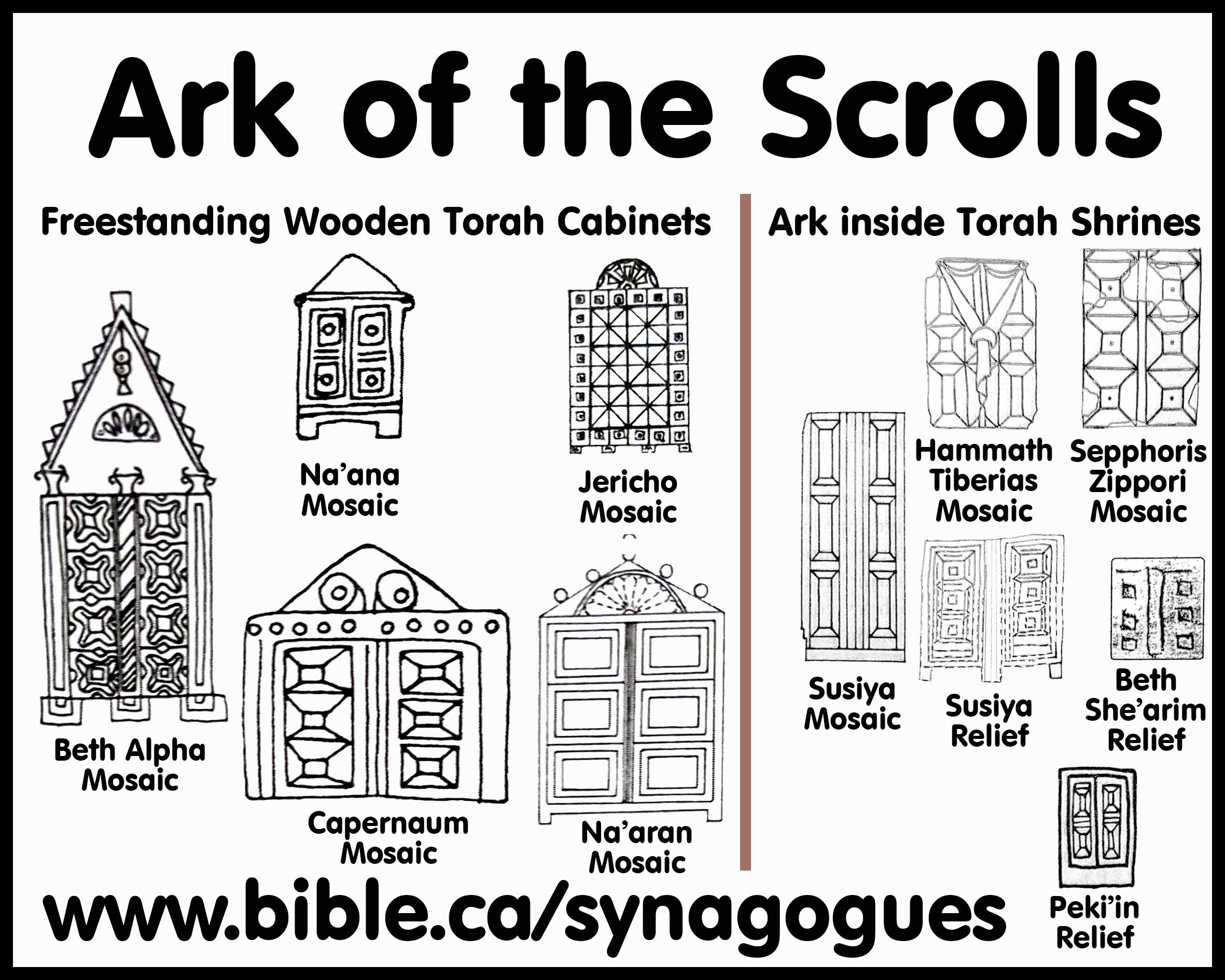
g.
The spectacular stone Torah Shrine, seen today, replaced this earlier
cabinet:
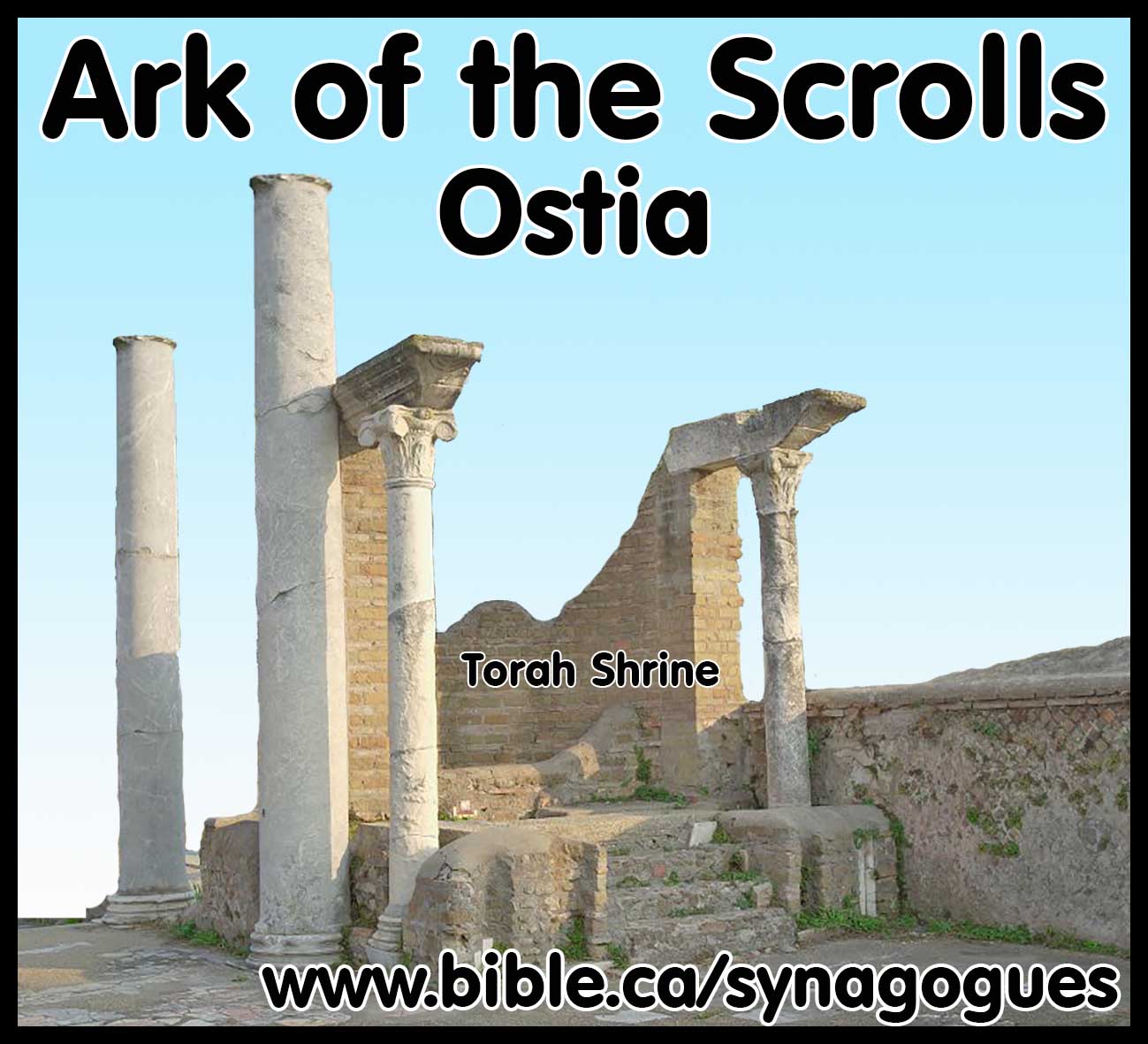
5. Triclinium bench seating:
a. See also: Synagogue Benches: Metaphor of Equality in Christ
6. The synagogue Bema:
a.
See also: The bema: Prototype
of the Church Pulpit
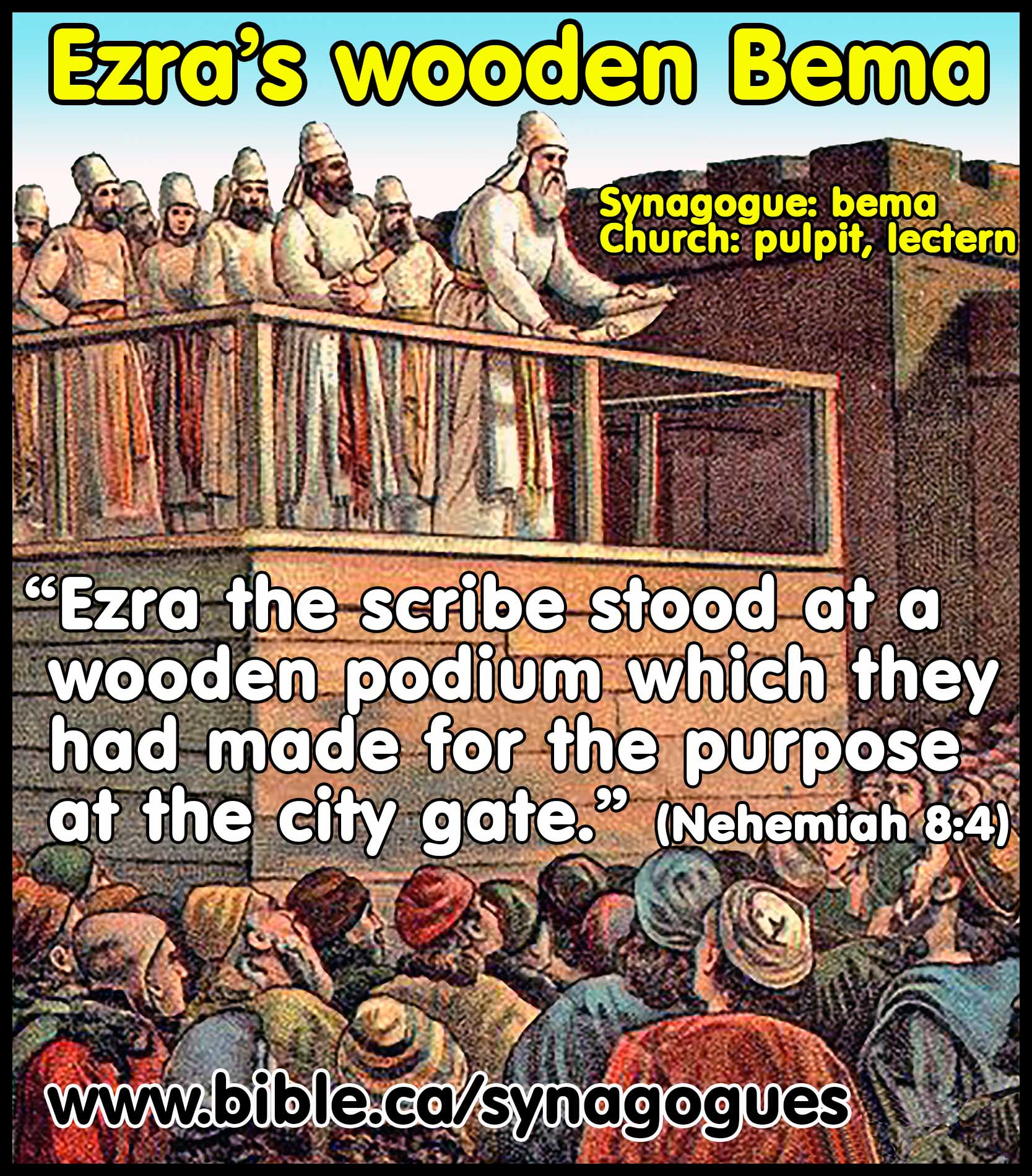
7. The Synagogue Mikveh:
a. See also: Mikvah for Ritual Purity: The Christian Maker
b.
There is a beautiful mikveh located just outside the synagogue entrance
used for ritual purity immersions before the Jews would enter the synagogue.
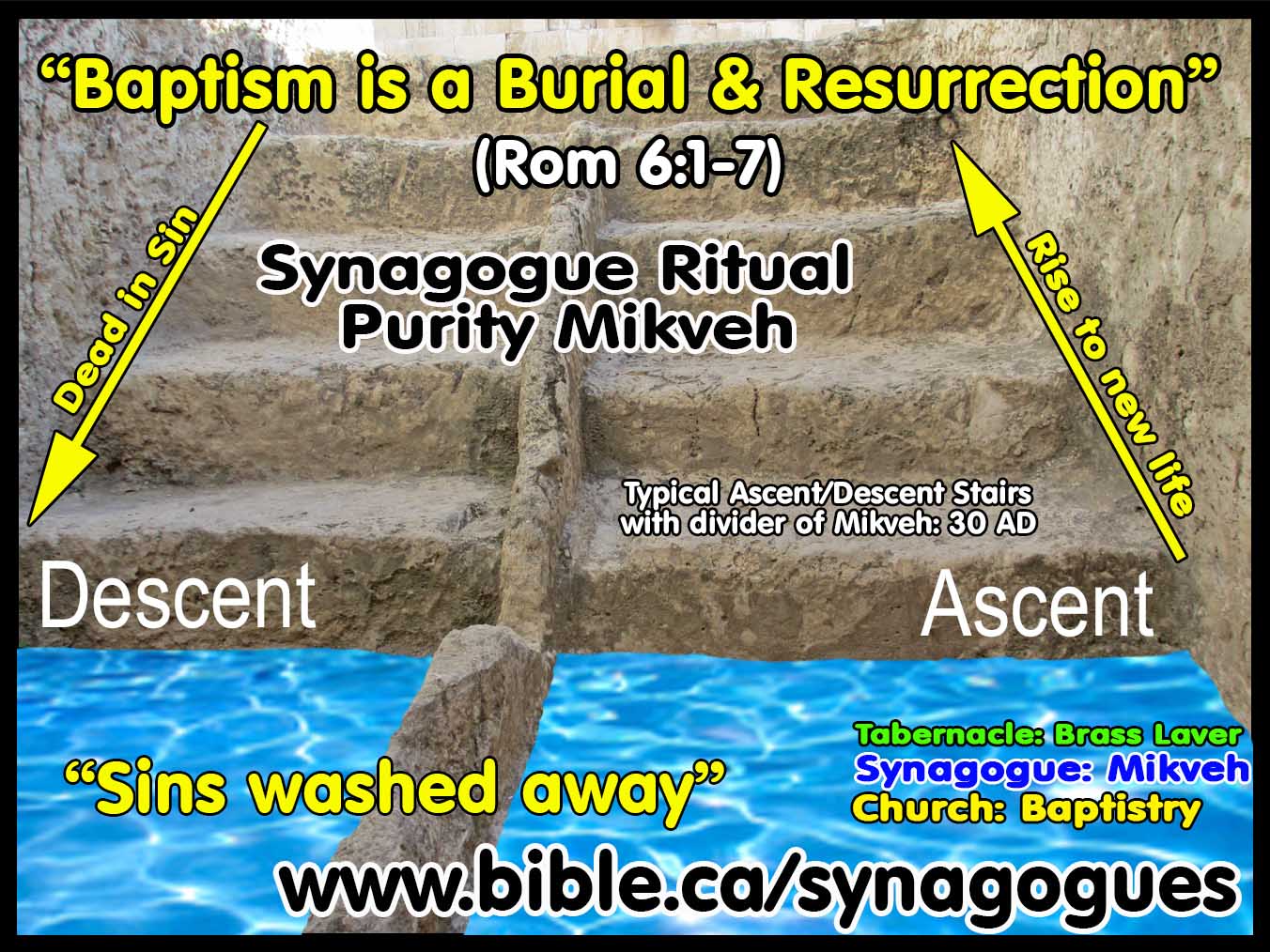
8. “One of the most important Diaspora buildings clue to its early date and use over several centuries, this synagogue was located south of the city walls, outside the porta marina, on the shore. The edifice was discovered by coincidence in the 1960s during the construction of a highway between Rome and the Fiumicino Airport. Excavations were carried out in two consecutive seasons in 1961 and 1962 under the direction of Maria Floriani Squarciapino (1917-2003). Important information and results from the excavations were published in several preliminary reports from the first and second seasons, and further analysis was provided in specialised studies on specific aspects relating to the building and its surroundings (e.g., Zappa, Pavolini). Unfortunately, a final report was never published; this, together with the fact that most publications were in Italian, left the field open for a host of various misunderstandings and misrepresentations of the findings. In the late 1990s, the Synagogue Project at Lund University, led by Birger Olsson, undertook comprehensive investigations of the building and its surroundings. The results were published in several studies, those dealing directly with the synagogue by Runesson. Subsequently, Olof Brandt at the Swedish Institute in Rome has contributed further analysis of the building (2004). Simultaneously with the Lund project and independently from it, Binder had studied the site, publishing his results in 1999. While Binder's and Runesson's work led to similar conclusions, White's analysis, which was published in 1997, provided radically different results, leading to a debate between him and Runesson (published in HTR and JSJ). Since then, White has begun renewed investigations at the site, a project that will extend over several years. This project, entitled The Ostia Synagogue Area Masonry Analysis Project, is a welcome contribution to the study of this synagogue; it will without doubt yield significant new information and provide material for further discussion. Until publications from this project begin to appear, including such new information, the following reconstruction is considered by the authors to be the most probable. The original, monumental edifice was constructed as a public building in the second half of the first century and functioned as a synagogue already at this time. The main hall (D; 15 x 12 m) was entered via a four-column construction in area C; the columns were of white marble, measuring 4.65-4.75 m. Benches for sitting lined three of the walls, including the north-western slightly curved wall, where a podium similar to the one found in the later building and connected to the benches may have stood. Southeast of area C was an entry hall (B) into which the main door of the building led (w 3.80 m). Immediately to the left after entering via this door was a triclinium (area G) containing a large bench (depth 1.83 m). Outside the main entrance (area A) stood a well with a shallow basin attached to it. Adjacent to the synagogue building to the west was a private two-story house (K). While building K was not integral to the architecture of the synagogue, it is reasonable to assume some sort of social connection; perhaps this was a dwelling place for officials of the synagogue (cf. Nos. 177, 178). If so, it is possible that Plotius Fortunatus, the archisynagogos (No. 177), lived here for a period of time. A first major renovation of the edifice took place in the early second century, perhaps during the reign of Hadrian. Changes to the original structure mainly concerned areas G and B. The bench in G was removed, the room divided into two sections, and mosaic floors replaced earlier cocciopesto floors. While the main entrance was kept intact, area B was divided into smaller rooms, of which the northern one contained a large shallow basin. At the same time, a nymphaeum was introduced in the southern part of building. Further major renovations and changes to the building were carried out in the fourth century.” (The Ancient Synagogue from its Origins to 200 AD, Anders Runesson, p226, 2008 AD)
9. “The synagogue of Ostia: Another early building identified as a synagogue is from ancient Ostia, the port city of Rome (Drawing 2). It was founded in the first century C.E., and whether it was intended from the beginning to be a gathering place for the Jewish community is still open to debate. Still, it seems clear that the first renovation of the building for use by the Jewish community resulted in the general lay-out of the Main Hall (D) with the center of interest being the bema, or raised platform, against the west wall. Benches lined the north and south walls, but not for their entire lengths. The Main Hall was about 16.3 × 12.5 m. in maximum extent, which compares favorably to the synagogue at Delos. If the inscription of Mindius (or Mindus) Faustus at Ostia refers to this renovation (see below), then an ark was installed on the bema. This renovation dates to the late second or early third century C.E. Late in the third century or early in the fourth century C.E., a second renovation took place. This time the building was “monumentalized:” the ceiling in the Main Hall was raised, columns were installed, and the shell of the Main Hall thickened. New walls were added so as to incorporate the Vestibule (A), Kitchen (G), Utility Room (F), and Dining Hall (E) into the total structure. The entry area was redesigned so that three portals opened off the Vestibule (A) into areas B and C, which conducted worshipers into the main hall down a kind of nave and two side aisles. A second major change occurred in the orientation of the Main Hall (D) when an aedicula was built against the south wall as a Torah Shrine. In this change the new Torah Shrine moved the center of interest from the west to the south-east. The new shrine blocked the south aisle, necessitating other changes, namely, the addition of low balustrades between area B and the south aisle to block traffic. These additions may have occurred early to mid-fourth century C.E. Other embellishments and decorations occurred after this last addition, but the outlines of the building were firm until it went out of use. Some of these later decorations included menorah reliefs on architectural elements of the Torah Shrine. The building was abandoned at some point in the fifth century C.E. The synagogue inscription from Ostia was found in re-use as a repair tile in the last stages of the building. It was originally cut into the tile near the end of the second century C.E. or the beginning of the third century C.E., that is, about 200 C.E. The first line is in Latin, the remaining six are in Greek, but cut by the same hand, though there is a suggestion that the last two lines containing the name of Mindius Faustus are in a second hand. FOR THE WELL-BEING OF THE EMPEROR. MIND<I>US FAUSTUS ME[…] […]DIO[…] CONSTRUCTED [THE SYNAGOGUE] AND MADE [IT] FROM HIS OWN FUNDS, AND HE DEDICATED THE ARK FOR THE SACRED LAW. The additional “I” in the name Mindius was suggested from the find of the name “Mindius” in other inscriptions in the environs of Ostia. This is a large plaque, about 29 × 54.5 cm., presumably originally installed in a wall. It is noteworthy that the Greek word translated “ark” was evidently already used as a technical term in this inscription.” (The encyclopedia of Judaism, Neusner, Volume 3, Page 1375, 2000 AD)
10. “A key difficulty in the present discussion stems from limitations of the archaeological reports, since we do not possess a final and complete stratigraphic or masonry analysis. For this reason, Maria Floriana Squarciapino's own articles characteristically started with the final form of the building, in which the architectural shape and Jewish identity are clearly demonstrable on the basis of direct archaeological evidence. To date, the discussions of the earlier stages have necessarily been more limited and suggestive rather than definitive in nature. This was true of my own study as well, since we can only work backward toward the earlier stages from what is preserved within and through the later stages. It was here that I raised questions of Squarciapino's conclusions. As her articles make clear,' Squarciapino began by assuming the Jewish identity of the building in its final stage based upon, appropriately enough, the presence of the Torah niche with menorah reliefs on the corbels. She then asserted the Jewish identity of the building in its earliest stage (which she dated, according to the masonry, to the first century CE), based exclusively on the curved rear (west) wall of the assembly hall (room D) and the presence of benches around the walls.' The evidence used to support this conclusion was that it resembled the typical Galilean synagogue of that same time (first century CE). She then argued that there was a continuity of Jewish usage from the earliest to the latest stages based on the Mindis (sic) Faustus inscription, which must have come from some intermediate stage.' The problem is, of course, that we now know that the Galilean "type" of synagogue architecture that she presupposed did not exist in this sense in the first century CE, and all the known examples from archaeological sites (including the ones cited by Squarciapino) are dated centuries later. Therefore, this part of her archaeological conclusion is open to serious questions regarding both architectural form and paradigms.” (Reading the Ostia Synagogue: A Reply to A. Runesson, L. Michael White, Harvard Theological review, Vol 92, No 4, p 436 1999 AD)
11. “Floors, Doors, and Benches: A major part of the argument that the building was originally constructed as a synagogue rests on the benches and, in turn, on the floors on which they were set. We must reexamine the problem on the basis of the archeological evidence. The view adopted by Squarciapino and followed by Runesson is that, at the time of the construction of the original edifice, there was a single floor of cocciopesto covering the entire area of B-G, without any interruptions, and a similar floor of cocciopesto in C and D. Runesson also follows Squarciapino in placing the construction of the benches in both D and G-B3 as coterminous with this floor." (One problem not discussed, however, is the difference in these two floor levels, since the level in areas G-B is apparently lower than that in area D; but we will return to this point momentarily.) Next, according to Squarciapino, the second level of floor is that represented by the mosaics in G and B-C (in the latter corresponding to the tripartite plan of the entry areas), while in room D the cocciopesto was replaced with the opus sectile pavement of the early fourth century. At this same time the benches in D and G-B3 were removed (or cut down and covered over by the new floors) and their function replaced by the new benches constructed in room E, which was annexed at this stage.” (Reading the Ostia Synagogue: A Reply to A. Runesson, L. Michael White, Harvard Theological review, Vol 92, No 4, p 443, 1999 AD)
12. “This brings me finally to the shape and function of these early buildings. Building K-E-H appears to have been a two-story domestic edifice of some sort that occupied the southern portions of the complex facing the ocean. It was built most likely by the Hadrianic period. The building defined by rooms D, C, B, F, G, and A was, in all likelihood, already in place before K-E-H, having been built near the end of the first-century.” (Reading the Ostia Synagogue: A Reply to A. Runesson, L. Michael White, Harvard Theological review, Vol 92, No 4, p 455, 1999 AD)
13. “So, what was the first building? I had already suggested in my 1997 article that it looks like an insula complex that might have contained a collegial hall, and Runesson seems to agree with this way of understanding the earliest stages of the architecture. But here we will also diverge, since I see no substantive evidence to support his other claims: (a) that the building should be called a freestanding "monumental public building," (b) that it was designed as a Jewish synagogue from the beginning, and (c) that K was an independent "private house."” (Reading the Ostia Synagogue: A Reply to A. Runesson, L. Michael White, Harvard Theological review, Vol 92, No 4, p 423, 1999 AD)
Conclusion:
1. Current excavation director at Ostio, Michael White, says the synagogue did not exist until the “late Flavian-Trajan period” (c. 100 -130 AD) and rejects the second temple dating by Runesson of 50 AD because no Galilean synagogues existed until after 70 AD.
a. This of course, was before the discovery of the single occupation Galilean synagogue at Madgala which dates to 50 BC and destroyed in 67 AD by the Romans.
b. White rejects the entire record of the New Testament and is in direct contradiction to the conclusions of careful and professional three dimensional excavations carried out by the IAA at Magdala.
c. I suggest white go back and get some professional archeological training in the children’s classes of a Bible believing church.
d. White has built his archeological “house upon the sand” and his conclusions dating conclusions at Ostia are therefore wrong.
e. Excavation director at Ostio, Michael White needs to learn that “archeology without a Bible foundation is just a pile of worthless sand”.
2. See also: First Century Jewish Messianic Expectation: As witnessed in the Dead Sea scrolls.
By Steve Rudd 2017: Contact the author for comments, input or corrections
|
Jesus your messiah is waiting for you to come home! |
|
|
Why not worship with a first century New Testament church near you, that has the same look and feel as the Jewish Synagogue in your own home town. As a Jew, you will find the transition as easy today as it was for the tens of thousands of your forefathers living in Jerusalem 2000 years ago when they believed in Jesus the Nazarene (the branch) as their messiah. It’s time to come home! |
|
By Steve Rudd: Contact the author for comments, input or corrections.
Go to: Main Ancient Synagogue Start Page
